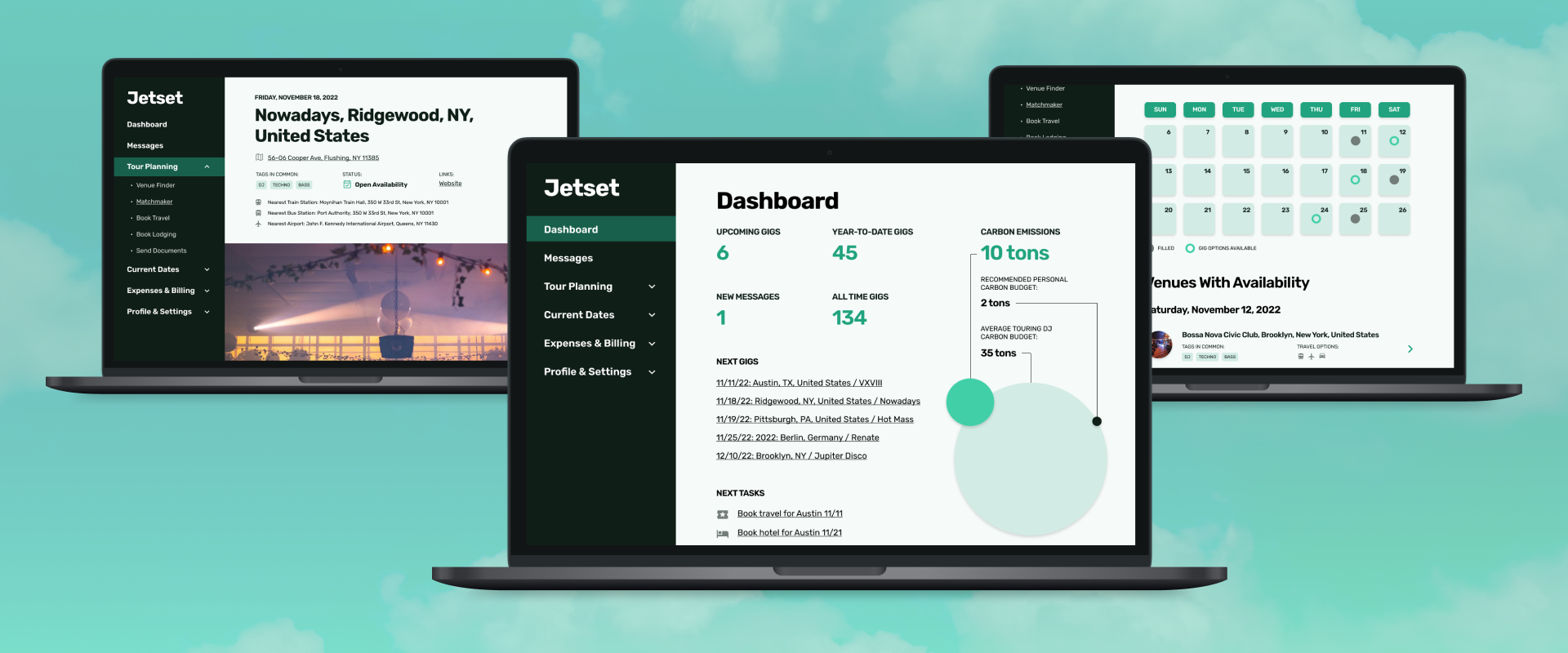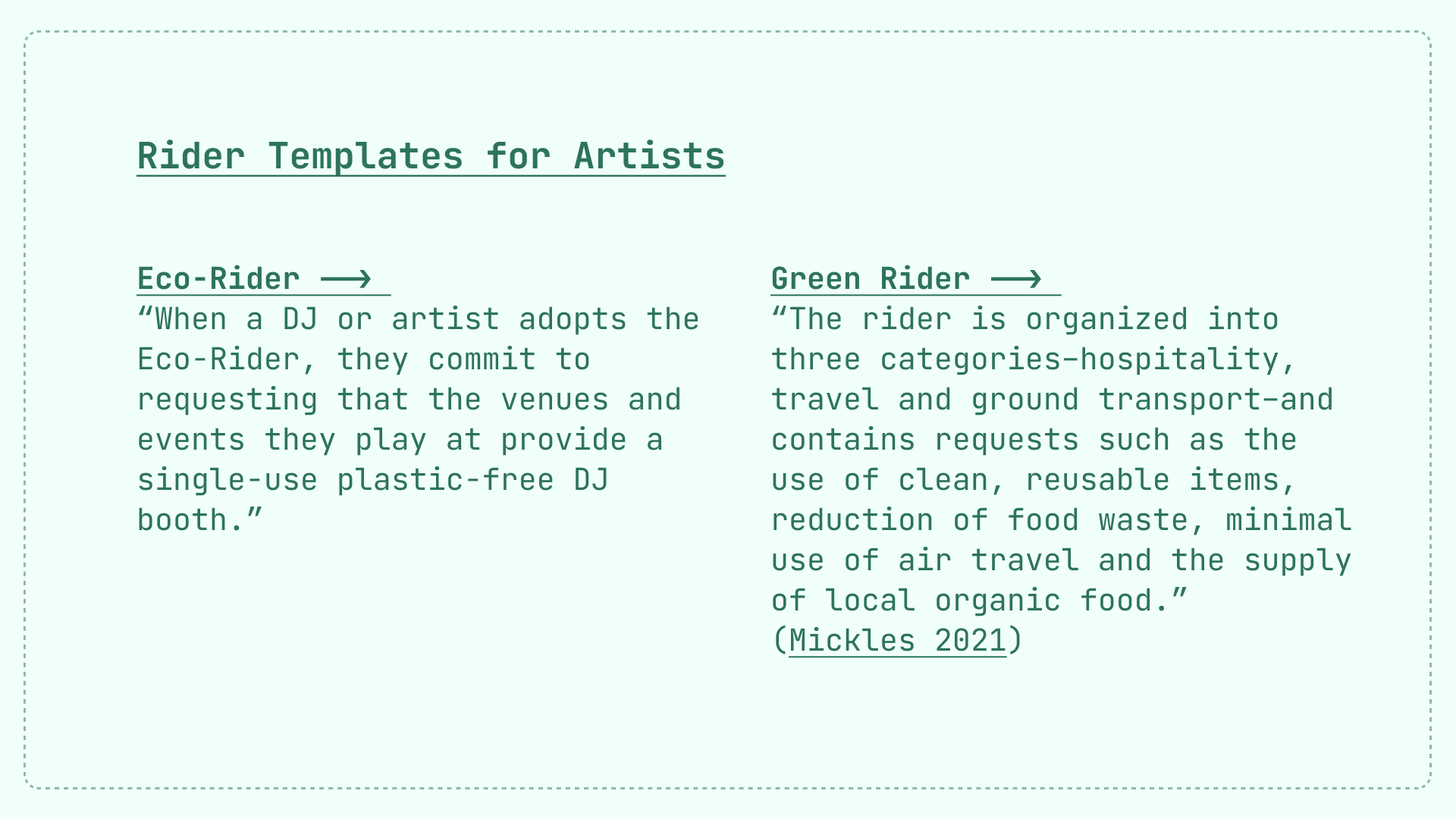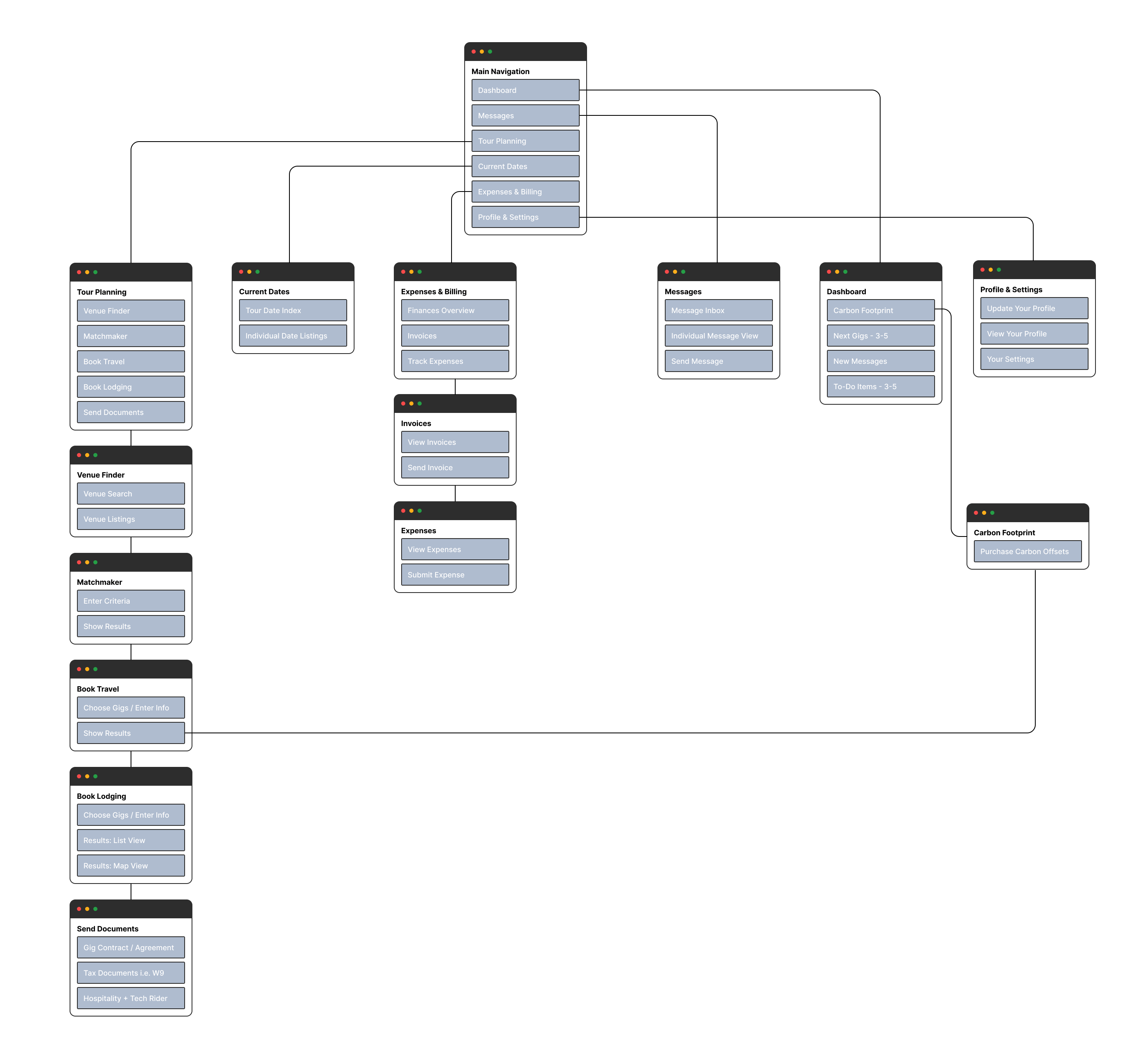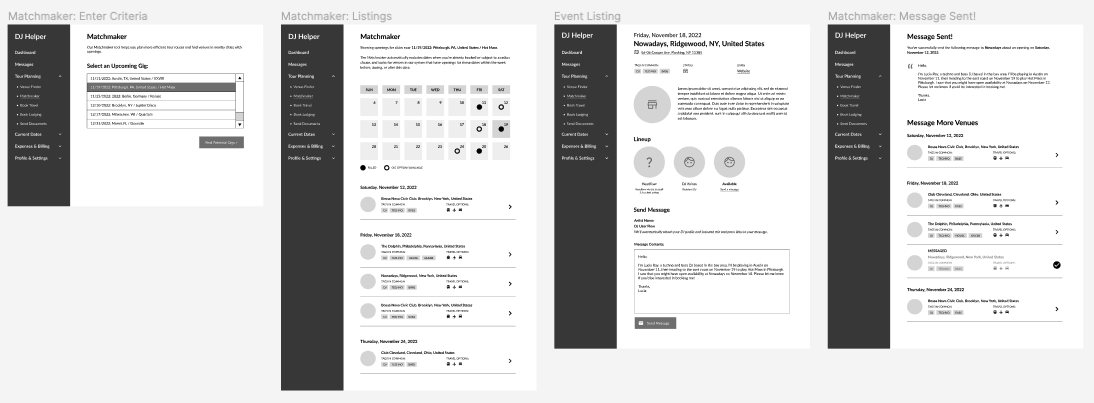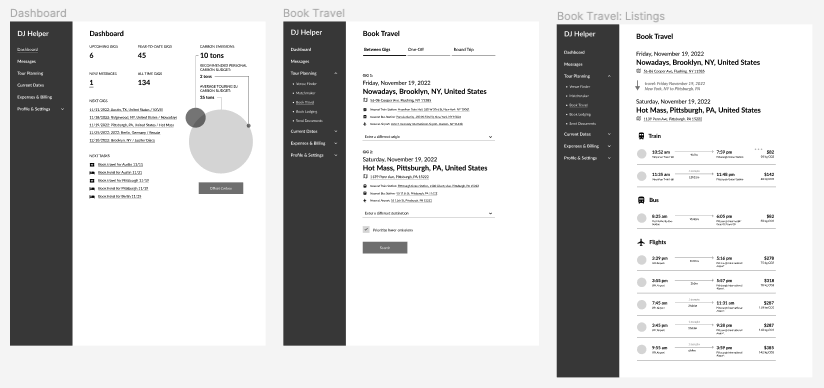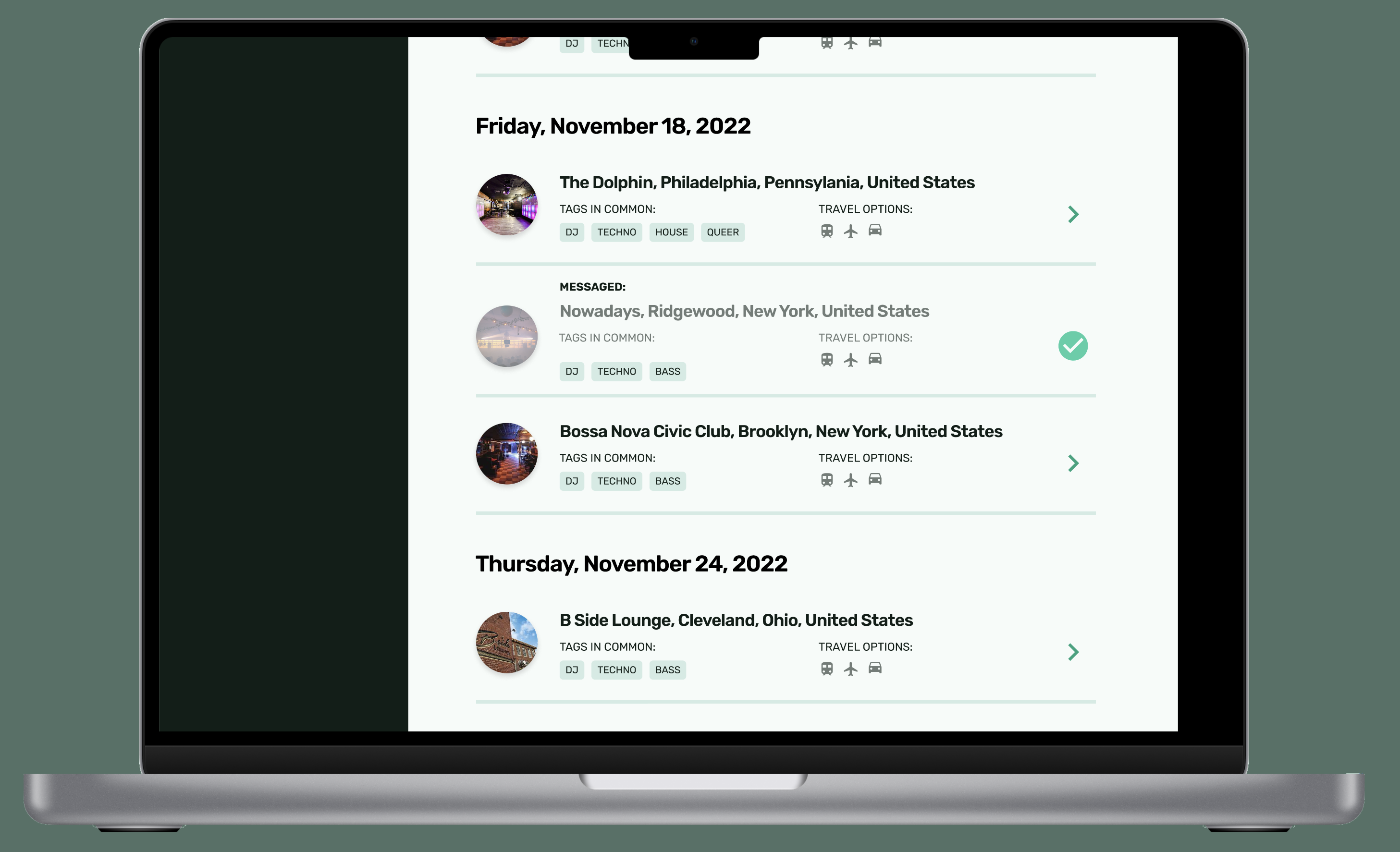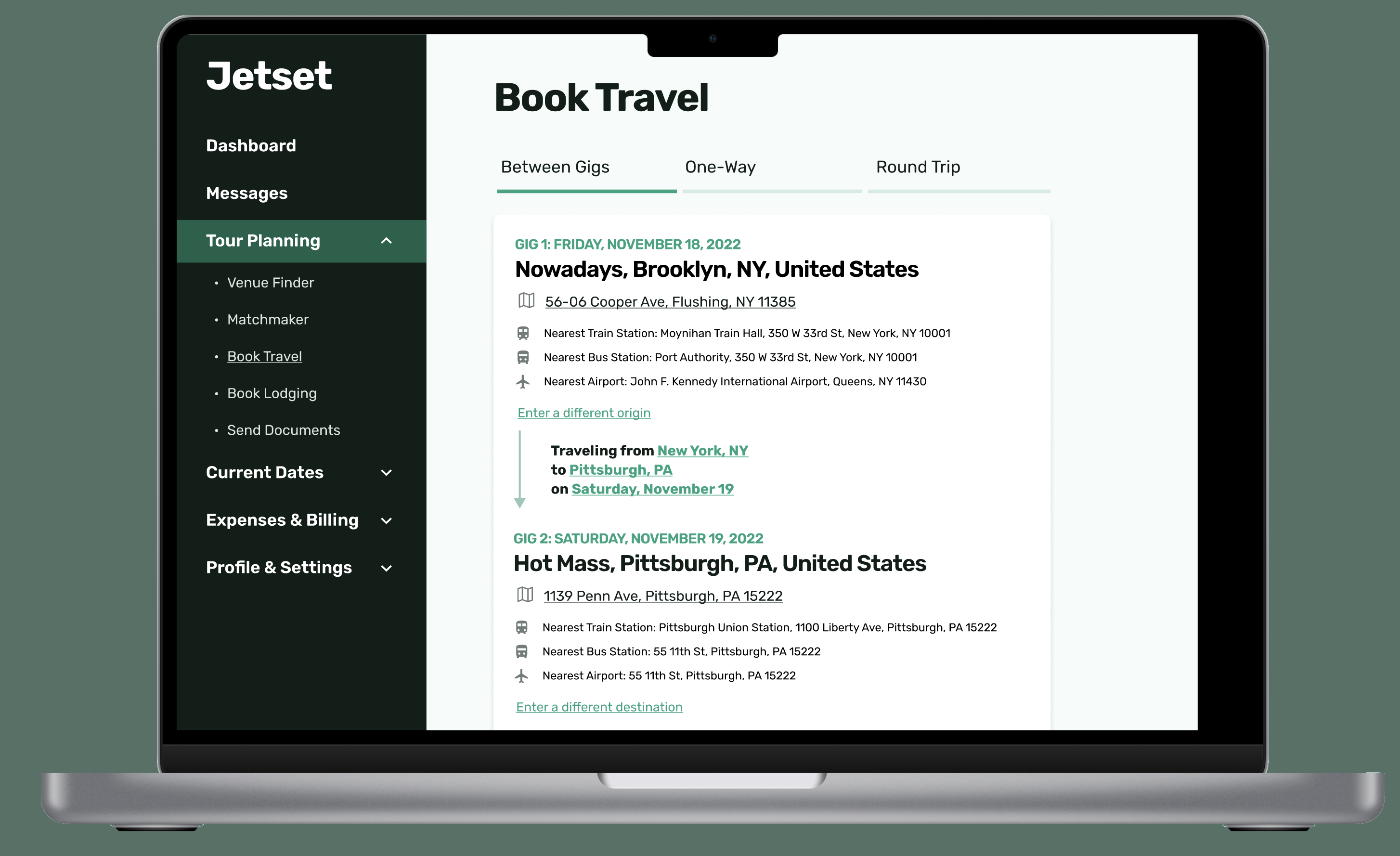Methodology
To get a pulse on touring artists and collect some qualitative data on a limited timeframe, I designed a survey.
I set up the survey in Google Forms and distributed it across my own Twitter and Discord networks and received a total of 15 respondents from multiple regions of the North America and Europe. I compromised on the number of responses in order to get more rich qualitative data that would feel more akin to the type of data I might have gathered from user interviews if I had more time.
With more time, I would have loved to follow up with more generative research such as in-depth interviews and diary studies with musicians as they planned a tour.
Findings
Almost half of respondents stated that sustainability was a consideration, but that other considerations take priority. Top priorities for artists booking travel were efficiency of route, timing, and lowest price. Lowest priorities were amenities such as food options, duration of stay, and sustainability.
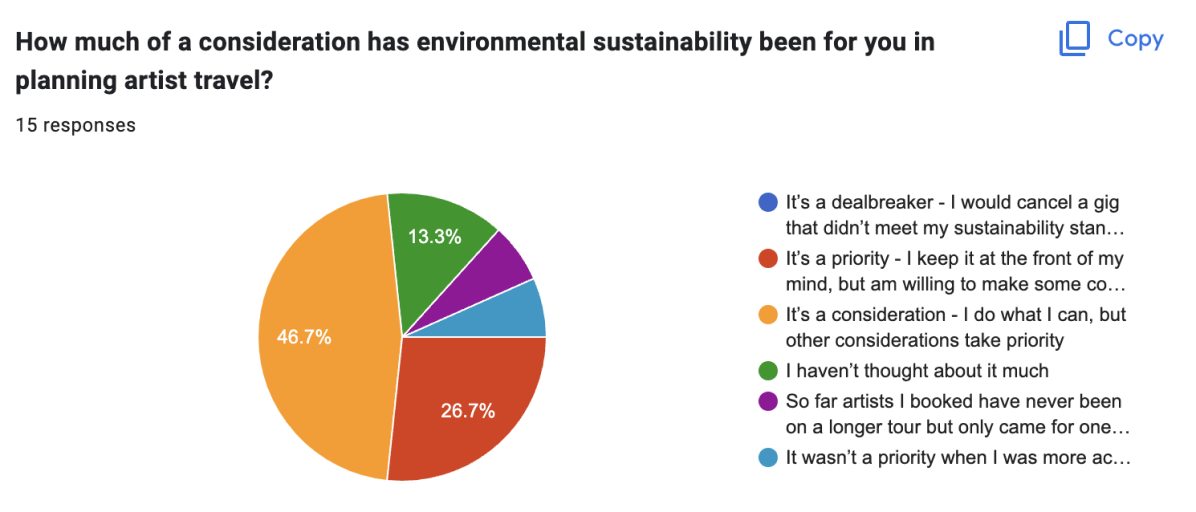
After completing the survey, I organized the results in a Figjam board to get a sense of the patterns, themes, and overall process an artist or booking agent goes through to book a gig.

I synthesized the results of my analysis into several broader findings, as well as a user persona (modifying a Figma template for the layout) and user journey map.
Artists are comfortable playing shows and working their craft; most of their challenges come from planning and logistics. This is also where most sustainability challenges occur.
- Most artists will not have the capacity to prioritize sustainability unless other problems are also solved.
- Templated documents, such as agreements, contracts, and invoices, could be helpful for independent artists.
- Simplifying communication and discovery between various entities involved in the booking process - for example, helping artists find nearby venues with openings for more efficient tour routing, or helping venues find artists to fill slots.
Most artists are using existing tools such as Google Calendar, Google Docs, the Notes app on their phone, and social media messaging to secure and plan gigs.
- Artists could benefit from a unified or specialized tool for booking and managing gigs.
- ...However, this tool should probably sync with some of the most commonly used existing tools, such as Calendar apps.
Many barriers to sustainable touring are systemic - for example, poor systems for rail travel in some regions, and “Global Capitalist Hegemonic Power” as one artist put it.
- This is a hard one for us to fix :) But we can acknowledge it and accept that we may need to accept some imperfections and make some compromises as we work toward greater sustainability.


